Farmers and TVA Use Trees to Aid in Flood Control
On the banks of Sugar Creek in south-central Tennessee, pastures rippled in the stiff wind. The scent of gust-carried dust and the spice of springtime plants steeped the air.

From left, Nathan Cannon walks alongside Heidi McIntyre-Wilkinson, of the Tennessee Department of Agriculture; David Cannon; and Drew Grimmitt and Greg Wunner, both of the U.S. Department of Agriculture’s Farm Service Agency.
But the stars of the show were the saplings.
Rows of newly planted trees stood in holes that farmer David Cannon and his family had augured in the gravel-studded ground.
As a farmer, he signed up for the Tennessee Riparian Incentive Program, or TRIP. It’s a statewide partnership between the Tennessee Valley Authority and other agencies to plant riparian buffers – lines of trees along waterways – to protect rivers and the people who depend on them.
“We have 1,500 trees and four different species – three species of oak and one tulip poplar,” Cannon said, walking the rows.
He pointed at the backwaters that ran into Sugar Creek.
“About 15, 20 miles from here, this creek flows into the Elk,” he said.
“Those buffers are like a sponge when it comes to managing floods,” Shannon O’Quinn, TVA senior water resources specialist, said.
And that’s one reason Cannon’s planting trees.
Flood prevention, river navigation improvements and stewardship are central to TVA’s mission.
“In addition to providing reliable and affordable power, protecting communities from floods and maintaining rivers are part of our mission and responsibility to serve the region,” said Michael McCall, TVA vice president of Environment and Stewardship.
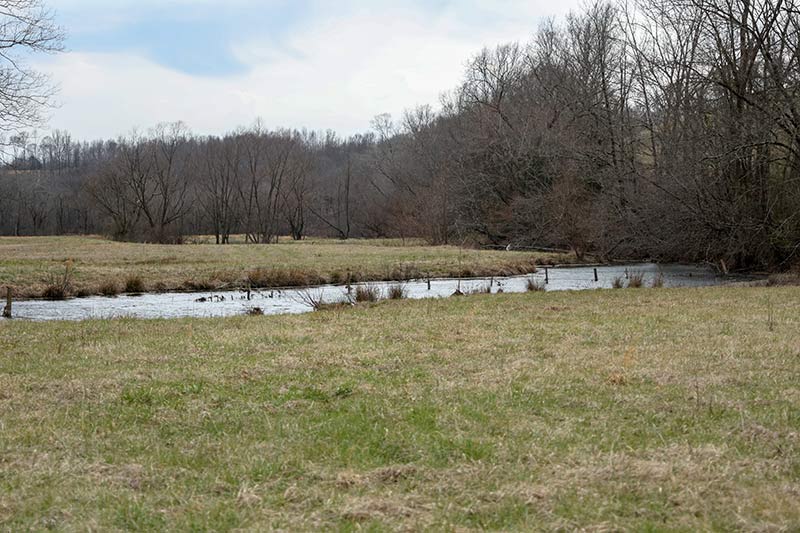
Sugar Creek, in south-central Tennessee, flows into the Elk River. Nearby lands will benefit from riparian trees planted as part of the Tennessee Riparian Incentive Program. (Photos by Susan Ehrenclou / TVA)
The Full Story of Flooding
Cannon’s lived on these 360 rolling acres for decades. He remembers long, hot days hoeing tomato and okra fields, tending row crops in the 1960s and herding livestock.
“I don’t remember not having cattle,” Cannon said. “We had ‘em when I was a little kid. Always.”
And he doesn’t remember a time without floods, either.
He pointed out the fence running along the lowland creek.
“If you get at least 4 inches of rain in a hurry, it will flood right up,” he said. “The worst part about this field is every time the creek gets up, you’ve got to put the fence back up.”
While reinforcing the riverside helped with some of the worst problems, the creek still overflows its banks.
Each time, it unseats fence posts and carries anything that’s in the field – fertilizer, nutrients from cow manure, loose soil – into Sugar Creek and downstream into the Elk River.
The story’s the same from farms, construction areas and cities up and down the river system.
Fine sediment and silt make water cloudy. That limits light, chokes fish gills and fills up the spaces between rocks where animals need to lay their eggs and hunt.
Fish, mussels and other species – many of which only exist here – depend on the Elk River’s clean, flowing water to survive.
Nutrients act as fertilizer for algae, which clogs rivers and reservoirs with mucky green blooms.
“Nutrients and sediments are probably the two primary nonpoint source pollutants in the United States,” said O’Quinn, whose work helps protect aquatic habitat throughout the Valley region.
“These pollutants ultimately have an impact on the health of the Tennessee River system and reservoirs.”
The riparian buffers help reduce the pollutants loads that would otherwise go into rivers and reservoirs, and they improve aquatic habitat.
State and federal agencies worked for years to bring this program to the public. It aims to add up to 500,000 new trees to Tennessee’s river systems and fits into TVA’s Community Trees Program, bringing benefits of trees Valley-wide.
“This is the very beginning,” O’Quinn said. “This planting will create momentum and get more landowners involved.”
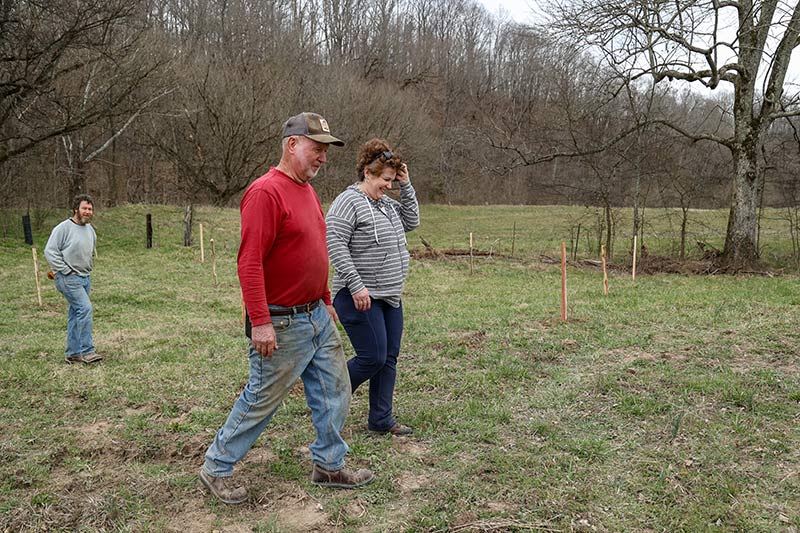
Nathan Cannon and his uncle, David Cannon, walk their land with TVA watershed representative Kathy Hawes.
‘A True Partnership’
While floods bring pollution to the rivers, they also exhaust farmers.
After decades of withstanding floods, rebuilding fences again and again and driving cattle out of the bottomlands during heavy rains, Cannon was done.
“I sold all my cattle a year ago,” he said. “Haven’t missed them yet.”
And that’s where the Tennessee Riparian Incentive Program came in.
The U.S. Department of Agriculture’s Farm Service Agency, which runs the Conservation Reserve Program, approached Cannon and neighbors whose land bordered Sugar Creek.
They explained that Cannon could replace the grazing land with an orchard of native trees – receiving compensation for the loss of farmland.
And while the Tennessee Riparian Incentive Program does pay, it’s a true partnership.
“This is a program for active farmland,” O’Quinn said. “The farmers have skin in the game, too. They plant the trees. They do the work. It’s all about us working together to make these projects happen.”
Landowners sign an agreement to maintain the buffer for at least 10 to 15 years.
“I’m obligated to bush hog in between until the trees get big enough to be on their own,” Cannon said.
He gestured to tubes he would wrap around trees to protect them from browsing deer and beaver – another program requirement.
Agencies advise farmers on types of trees, often suggesting mast trees with fruit or nuts to attract wildlife. The supply depends in part on what’s available at local tree nurseries.
“You see the flags?” Cannon asked. “We’re staying 180 feet from the creek, going around up to that corner, then we’ll skip over and get into another pasture. That was one that, every time it rained, you’d have to go find the cattle and then bring them home and fix the flooded fence again.”
Cannon mopped his brow.
“I’m hoping when we get into the other field it won’t be as much creek gravel, and we’ll be able to use a shovel and a spade and get them in the ground.”
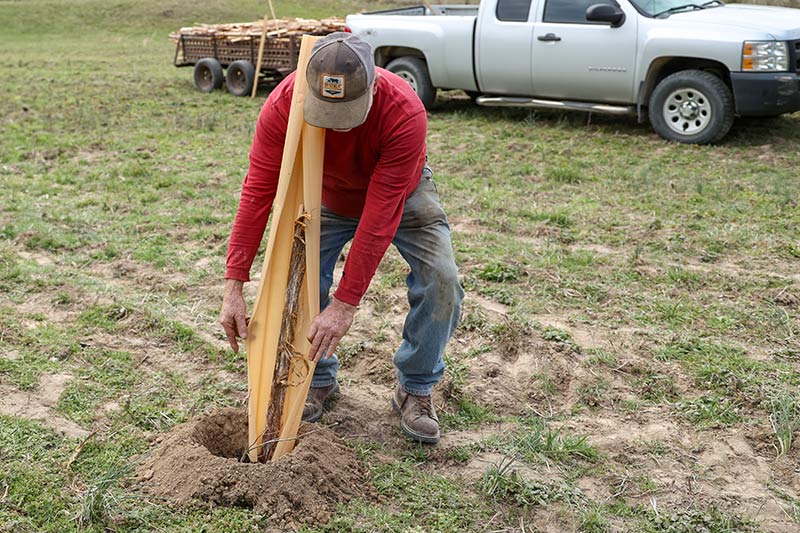
David Cannon demonstrates how he wraps a protective tube around a new tree.
Benefits Beyond Buffers
As hard as the work is, the benefits will pay off for decades.
“When those trees are established, they’ll be really good at helping filter out fertilizers and sediment,” Heidi McIntyre-Wilkinson, Environmental Program manager for the Tennessee Department of Agriculture, said.
O’Quinn agreed.
“Planting trees is probably the simplest and one of the most cost-effective ways to manage water and also reduce pollution,” he said. “It’s a preventative measure.”
While Cannon decided to give up his cattle, the program supports farmers who keep raising crops or livestock, too – because adding trees benefits land of all kinds.
“This is just a great program,” O’Quinn said. “And it provides a pretty good incentive for farmers to get involved.”
Even people living downstream, who know nothing of Cannon or the program, will reap rewards into the future.
“Planting riparian buffers reduces pollution flowing into the rivers and TVA’s reservoirs,” O’Quinn said. “It helps improve and protect habitat for fish and aquatic life and it improves recreational opportunities.”
Millions of people depend on the Valley region’s rivers and reservoirs for drinking water, boating, fishing and spots of refuge.
Cannon pulled another tiny tree from the bundle.
“I don’t see why more people don’t take part,” he said.
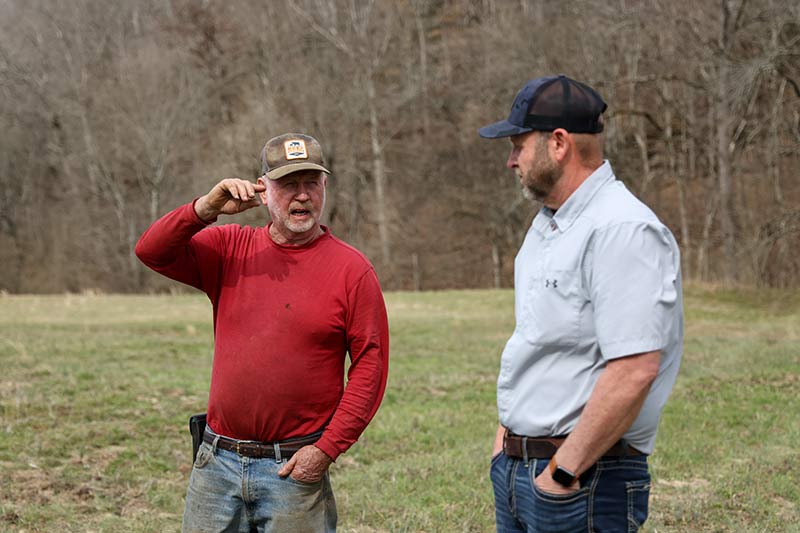
Cannon chats with Greg Wunner, of the U.S. Department of Agriculture’s Farm Service Agency.
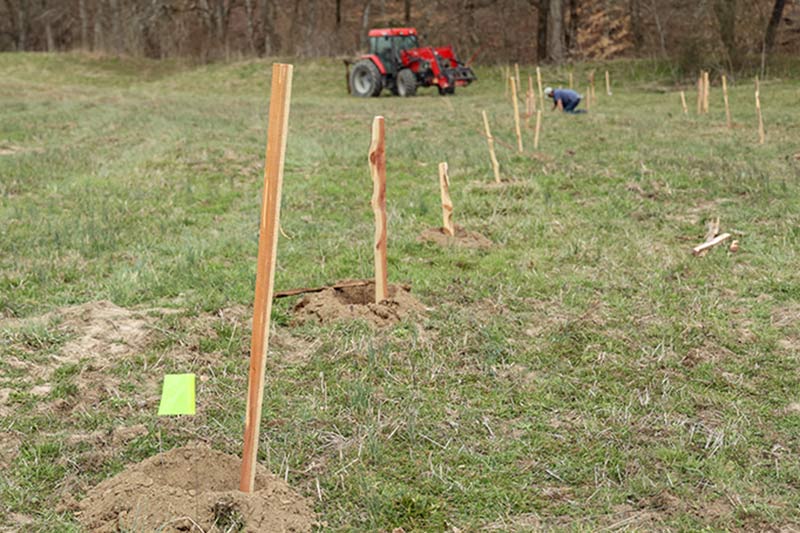
Crews planted new saplings along a row of pre-augered holes.
